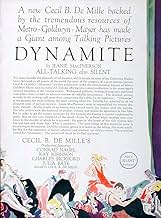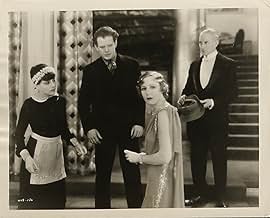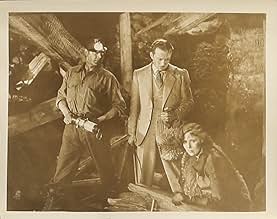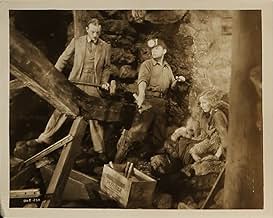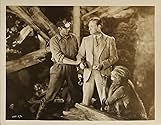Agrega una trama en tu idiomaWealthy Cynthia is in love with not-so-wealthy Roger, who is married to Marcia. The threesome is terribly modern about the situation, and Marcia will gladly divorce Roger if Cynthia agrees t... Leer todoWealthy Cynthia is in love with not-so-wealthy Roger, who is married to Marcia. The threesome is terribly modern about the situation, and Marcia will gladly divorce Roger if Cynthia agrees to a financial settlement. But Cynthia's wealth is in jeopardy because her trust fund will ... Leer todoWealthy Cynthia is in love with not-so-wealthy Roger, who is married to Marcia. The threesome is terribly modern about the situation, and Marcia will gladly divorce Roger if Cynthia agrees to a financial settlement. But Cynthia's wealth is in jeopardy because her trust fund will expire if she is not married by a certain date. To satisfy that condition, Cynthia arrange... Leer todo
- Dirección
- Guionistas
- Elenco
- Nominado a 1 premio Óscar
- 1 premio ganado y 1 nominación en total
- Bobby
- (as Douglas Frazer Scott)
- Good Mixer
- (sin créditos)
- Mine Foreman
- (sin créditos)
Opiniones destacadas
I got lucky because they broadcast this on TCM the same week the classic movie channel premiered their recent biography 'Cecil B. DeMille: American Epic (2004)', another TCM film worth watching. It is devoid of the usual colossal cast and the behemoth type epic drama associated with most DeMille movies but am I ever glad I stayed up late for this one...the sets and costuming were pure eye candy! And while it is more simplistic than movies we think of as DeMille classics there are some remarkable scenes in this film including a glass walled bathtub with bath salts as big as the coal chunks mined out of the heroines'temporary' husband's work place. I'll not quickly forget the women's 'aero wheels' event during the sporting day at the country club. Could this have even been the inspiration to the wacky Busby Berkeley extravaganzas that didn't appear for at least another four years after 'Dynamite'? The costumes in this movie are museum worthy. There's also tremendous amount of Deco decor which is discriminating and sublime as a period piece.
The plot premise is rather sappy...spoiled rich kid falls for poor coal miner who teaches her a lesson in reality...where haven't we all heard that story before... but it's easy to forgive some minor flaws with this picture because visually it's too damn delicious to forget. The acting was decent and at times even humorous, especially amongst the love triangle. This relationship was obliging liberated given the era. And oh...the parties!
I also appreciate the lushness of a truly dynamic black and white movie from someone who understood how color translates when it desaturates. If I saw this movie when it premiered I would have marked it an 8 1/2 on a scale of 10.
Of interest especially is the fact that you can recognize the stage training of many of the actors brought to Hollywood with the advent of sound, and how wooden previously silent actors can be when given voice. Also interesting is the characters' flagrant flouting of Prohibition, which still had 4 years left - after all, this was "pre-Code" Hollywood when there wasn't a censor to be found!
Most significant is the sound. The scene which annoys modern viewers is the chaos in the jailhouse wedding scene. However, this is one of the first instances of layered sound: the hammering of the gallows over the prisoner's singing over the wedding vows was a first for a medium that had gone talkie only a year & a half earlier.
So watch it for the details, not the drama
Ordinarily I'm not that huge a fan of DeMille, but I found his first foray into sound, "Dynamite", a very good and innovative film. The actors don't speechify endlessly, the camera moves, and the story moves with it. Unlike many films from 1929 it's worth a repeat viewing for the entertainment value, not just the novelty of seeing an industry in transition.
That doesn't mean that there isn't plenty of an industry in transition on exhibit, but rather than inane musical numbers, De Mille uses sound appropriately and also employs largely unknown actors from the stage to keep the emphasis on the plot and in particular, the relationships. From the hammering of the builders of Hagan Dirk's gallows and the singing of "How Am I to Know" by a fellow death row prisoner played by Russ Columbo during the wedding scene, to the strange aero wheel race at the country club, to the playing of a particular song on the radio introducing a romantic moment, this film was an innovative technological marvel when it was first released. However, technological marvels fade with time, and what you do remember are relationships that hit home and are memorable. Many have already stated the outrageous premise of the plot. What is not outrageous and rings true after almost 85 years is how you don't get to pick who you love - it just happens and it can often be most inconvenient, and how heroes can be found in the strangest places and in people you would not think would be up to the task.
I'd recommend this one highly and not just to early talkie enthusiasts.
The in-between-the-lines context of this movie is also remarkable. Recall that Prohibition of alcoholic beverages had been in effect as a federal mandate for nearly ten years, and that many States had been "dry" with Prohibition for longer than that. But "the glittering society" depicted in this movie was positively soaking in booze. Clearly this movie was written and filmed well before the banking crisis of 1928-29 turned into the bank failures and bank runs of the early 1930s. The pace of the language, the styles, the ways of talking and relating expressed in "Dynamite" show the viewer -- now seventy-five years later -- that the Roaring '20s were very frenetic, indeed.
Prohibition was something for the small towns and rural areas, or so it was said, then. It came into being because activist female leaders made their case that drunken behavior and alcoholism were twin punishments on women and on their children. The majority of bad and abusive drunks in that era, 1880 to 1920, were men, of course. The ones who suffered from their abusive behaviors were their women and their children, or others in their families.
This is a movie which is all about women and men. The lead character, Buddy Derks, is about to be executed for a murder he didn't commit. In a drunken carouse, the young man who committed the murder assaults his drinking buddy with a knife, and this fellow in his turn shoots his friend, fatally wounding him. Before he dies, on the floor of the swank club where they're drinking, he confesses to the murder which Derks has been saddled with. Justice is swift, surprisingly so, and Derks is suddenly released from death row.
He goes then to confront the society 'dame' who paid him $10,000 to marry her, in a jail cell ceremony. The why and wherefore of this marriage of convenience are really extraordinary and that twist makes the movie worth seeing, alone. But suddenly the "dame" has a husband that she really does not want, and that's where the fun begins ....
Bickford is amazing in this movie. He clearly overacts, but it seems somehow so natural for him to do so. Everybody in this moving is either dancing or roaring, it seems, so now we know something about how the Roaring '20s roared !
This "Dynamite" is pure dynamite. TCM has done film buffs a great service by showing it all, and there's every reason to petition them to show it again and again, and not just in the middle of the blooming night !! This movie earned an * 8 * for my vote and I would have given it higher marks if the sound track was made more clear, all the way through. As it stands, it is a unique and appealing cinematic treat.
I recommend it most highly and without mental reservations.
¿Sabías que…?
- TriviaCarole Lombard was replaced during filming, but can still be seen in the released print.
- Citas
Hagon Derk: Ahhhh... bull!
- Créditos curiososFilm Title is shown as the word DYNAMITE written on a box of..... dynamite, after being set down by a worker.
- Versiones alternativasMGM also released this as a silent movie.
- ConexionesEdited into Histoire(s) du cinéma: Fatale beauté (1994)
- Bandas sonorasHow Am I to Know
(1929) (uncredited)
Music by Jack King
Lyrics by Dorothy Parker
Played on guitar and sung by Russ Columbo in prison
Played on radio and hummed and sung by Kay Johnson
Played on piano as background music and played at the end
Selecciones populares
Detalles
- Tiempo de ejecución
- 2h 9min(129 min)
- Color

